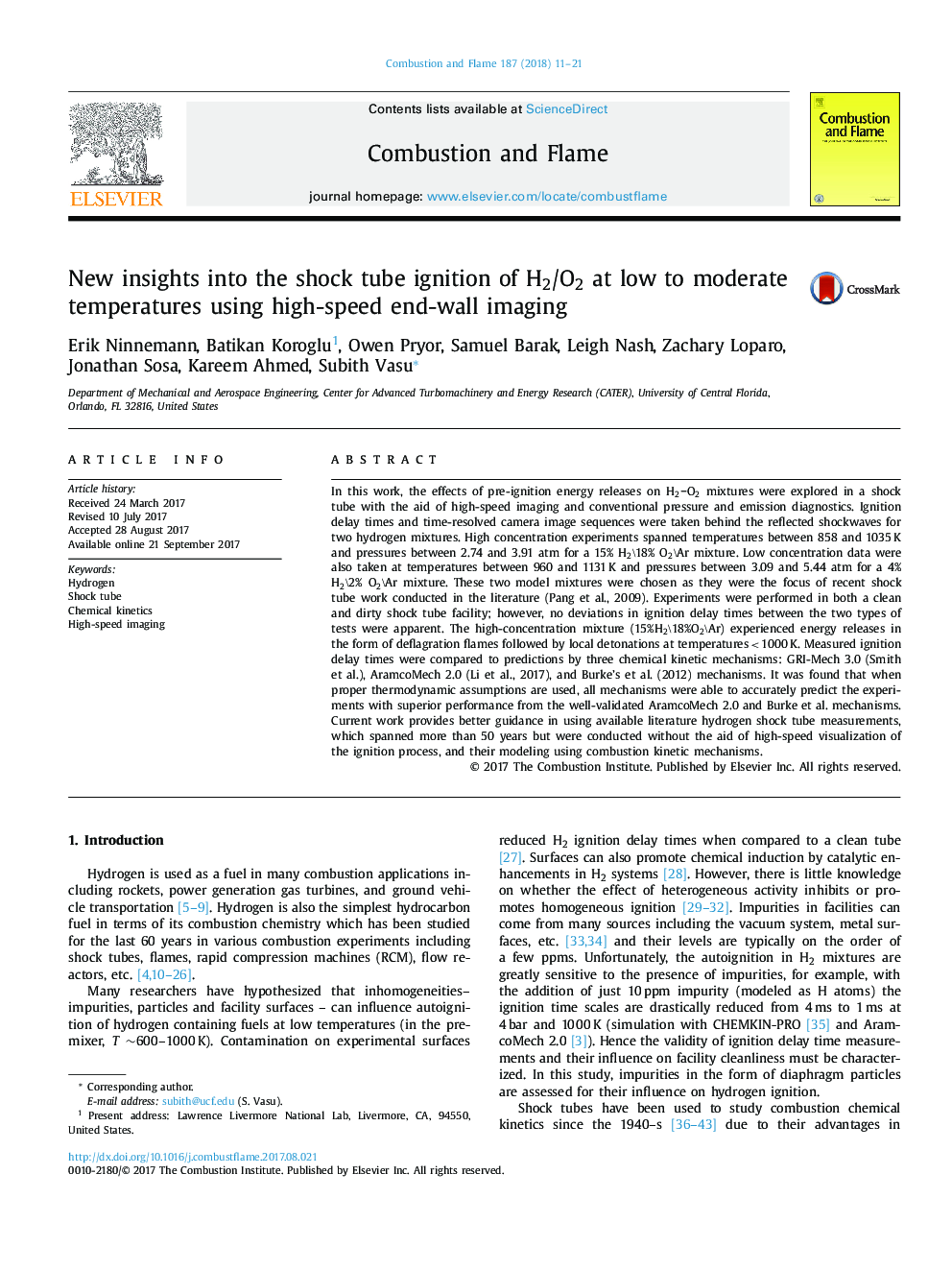| Article ID | Journal | Published Year | Pages | File Type |
|---|---|---|---|---|
| 4764489 | Combustion and Flame | 2018 | 11 Pages |
In this work, the effects of pre-ignition energy releases on H2O2 mixtures were explored in a shock tube with the aid of high-speed imaging and conventional pressure and emission diagnostics. Ignition delay times and time-resolved camera image sequences were taken behind the reflected shockwaves for two hydrogen mixtures. High concentration experiments spanned temperatures between 858 and 1035â¯K and pressures between 2.74 and 3.91 atm for a 15% H2\18% O2\Ar mixture. Low concentration data were also taken at temperatures between 960 and 1131â¯K and pressures between 3.09 and 5.44 atm for a 4% H2\2% O2\Ar mixture. These two model mixtures were chosen as they were the focus of recent shock tube work conducted in the literature (Pang et al., 2009). Experiments were performed in both a clean and dirty shock tube facility; however, no deviations in ignition delay times between the two types of tests were apparent. The high-concentration mixture (15%H2\18%O2\Ar) experienced energy releases in the form of deflagration flames followed by local detonations at temperaturesâ¯<â¯1000â¯K. Measured ignition delay times were compared to predictions by three chemical kinetic mechanisms: GRI-Mech 3.0 (Smith et al.), AramcoMech 2.0 (Li et al., 2017), and Burke's et al. (2012) mechanisms. It was found that when proper thermodynamic assumptions are used, all mechanisms were able to accurately predict the experiments with superior performance from the well-validated AramcoMech 2.0 and Burke et al. mechanisms. Current work provides better guidance in using available literature hydrogen shock tube measurements, which spanned more than 50 years but were conducted without the aid of high-speed visualization of the ignition process, and their modeling using combustion kinetic mechanisms.
